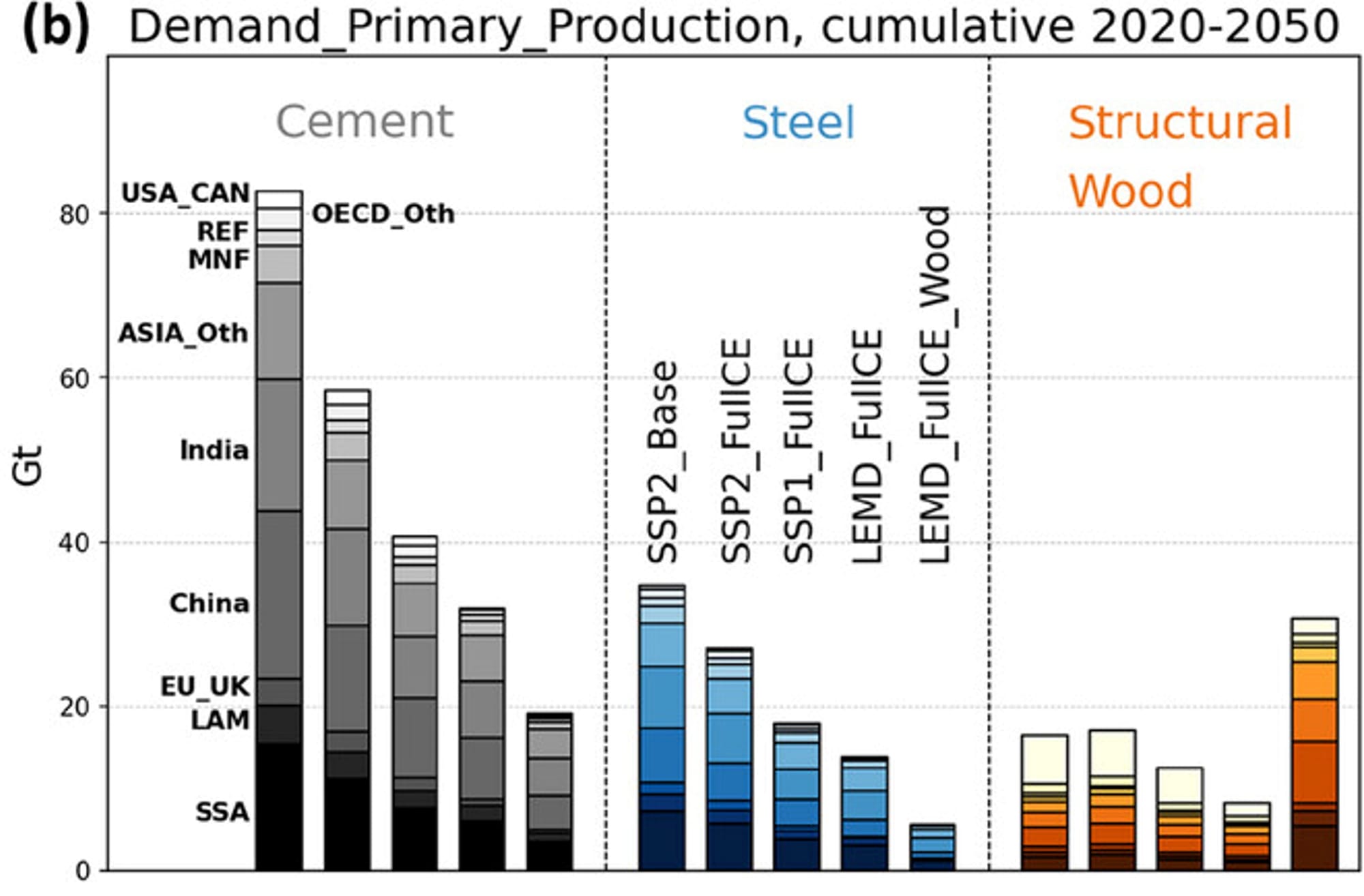Reducing GHG emissions from global buildings

Demand reduction, circular economy, and substitution offer complementary emission savings
A new scenario analysis for the global building stock confirms quicker and deeper emission reductions from combining biogenic building materials, lightweighting, lifetime extension, reuse/recycling, and demand reduction; compared to employing each strategy individually.
In a new paper in the Journal of Industrial Ecology, Stefan Pauliuk, Fabio Carrer, Niko Heeren, and I extended our previous modelling to include non-residential buildings and updated the analysis. Important insights:
- In all scenarios, material inflows are much larger than outflows. It is because of a growing population and the urbanization of Sub-Saharan Africa and South Asia. This new demand limits the scope of circular strategies such as lifetime extension, reuse, and recycling, as they do not apply in regions where demand for new building space is largest. These strategies are most effective in developed countries with an aging building stock, such as Europe.
- The largest material savings are achieved by reducing demand growth, limiting the amount of building space that each of us uses both for residential and non-residential purposes. Tax rules and planning drive demand for excessive building space beyond what it would be otherwise. They should be reversed.
- Non-residential buildings are of comparable importance to residential buildings. However, so far, they have received much less attention. We have previously only investigated office buildings, an important segment.
- The substitution of biogenic building materials for cement and steel offers significant opportunities for emission reductions that are larger than from circular strategies such as light-weighting, lifetime extension, and improved reuse/recycling. However, supply of such building materials is limited. We have primarily focused on wood but think that other materials such as bamboo, straw, reeds could offer additional supply.

Together, these strategies can reduce cumulative emissions between 2020-2050 by as much as 44%. This reduction is substantial given the large in-built inertia. The strategies are also complementary to emission reductions from decarbonizing the energy supply and would allow for a quicker and steeper decline in emissions.
On the global and in the abstract, this all works. It will be interesting to see how this plays out on a local level, where demand and building alternatives are much more tangible. I am looking forward to the application of Stefan Pauliuk’s ODYM-RECC framework to towns, metropolitan regions, and countries. The open tools allow others to reproduce and apply our work.

